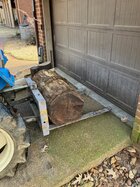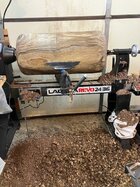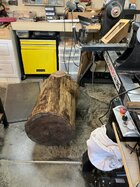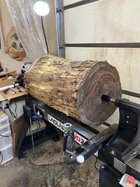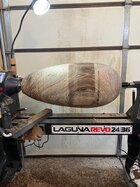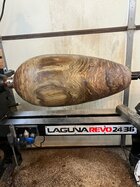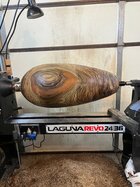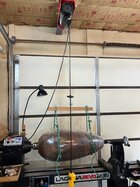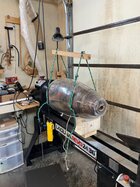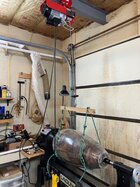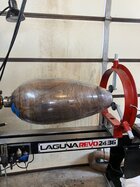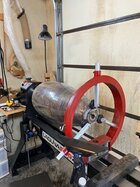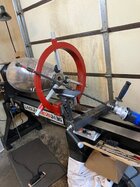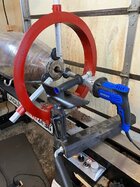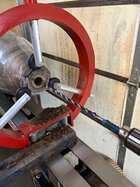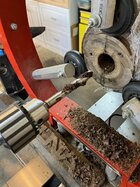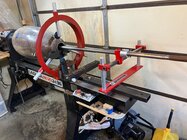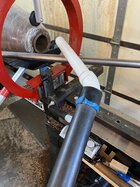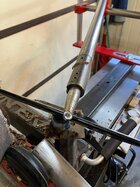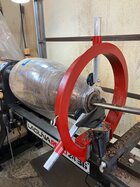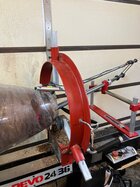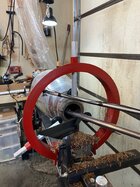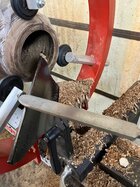I have a huge stockpile of large walnut that my nephew brought to me a few months ago. It was cut from a tree that blew over in the hurricane they had last summer along the gulf coast. I ended up getting most all of the tree, including the massive root ball. I started yesterday on the first of quite a few large pieces and decided I would try to keep up with a project thread on the process. Here are some pics of getting it into the shop with my tractor, rolled in place and then lifted up with my ceiling hoist I have over the lathe. I forgot to take a pic of the hoist process. Per the online log weight charts it weighs approx. 300lbs. I was able to peel off the bark with a pry bar in about 45 minutes rather than try and deal with it on the lathe. Worth the time vs the absolute mess and fight it can be with a rouging gouge.
I currently have the Clark 1 1/4" hollowing bar setup but have ordered his 1 3/4" bar setup for this one and others to come. I've hollowed to 32" before with what I have but even with an 1 1/4" bar it's a tough slog and battle for the last 12-15", depending on the wood. I debated hollowing from both ends, a viable option I've done before, but would prefer not to. The goal for the next couple of days is to decide on which end will be top and bottom and begin shaping. It's 33" x 16".
I currently have the Clark 1 1/4" hollowing bar setup but have ordered his 1 3/4" bar setup for this one and others to come. I've hollowed to 32" before with what I have but even with an 1 1/4" bar it's a tough slog and battle for the last 12-15", depending on the wood. I debated hollowing from both ends, a viable option I've done before, but would prefer not to. The goal for the next couple of days is to decide on which end will be top and bottom and begin shaping. It's 33" x 16".

